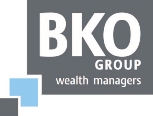View from the hill - Feature Article: Australian shares - "safer" than they appear?
The latest profit reporting season for the 6 months ended December has provided mixed results, with some stocks being sold down heavily for not reaching expectations, whilst others found strong support after exceeding market forecasts.
The profit reporting period is also the time when companies reveal details on the size of dividend payments that will be made. As has been the case over recent years, dividend levels have held up relatively well. Listed on the table below is the percentage change in dividends per share paid over the last 12 months to that paid in corresponding period two years ago for the top 10 Australian companies.
.jpg)
As suggested on the above table, the 10 largest Australian companies have on average been able to maintain almost 90% of their pre financial crisis dividend flows over the last 12 months. This is despite experiencing the most tumultuous financial climate in more than 70 years, where there was significant pressure on companies to retain cash flows to improve balance sheet positions.
It can be shown that the dividend flow across the Australian stock market has actually provided a more stable source of income than that would have been achieved from investing variable rate bank deposits over recent years.
The chart below compares the dividend income that would have been earned from an investment in the Australian stock
market (assuming an index allocation to the ASX 200) to the interest income that would have been received on a bank account paying the official overnight cash interest rate. It is assumed a $100 investment is made on the 1st of January 2004.
.jpg)
Hence, not only has the Australian share investment produced a higher flow of income than the interest bearing deposit over the period shown, but this flow of income has been more stable, given the sharp drop in interest rates experienced in 2009.
Whilst the Global Financial Crisis (GFC) did cause company earnings and dividends to decline, the changes that have been made to company balance sheets may make the flow of dividend payments even more stable in the future. In the post GFC period, many companies have repaid significant amounts of debt and raised new shareholder equity. This should have the effect of making earnings per share and dividends more stable and less sensitive to fluctuations in company gross revenue.
Admittedly there has been considerable capital volatility in the value of share market investments in recent years. However, given that over the longer term the bulk of share market returns come in the form of dividends rather than capital growth, it could be argued that the predominant focus of investors should be on dividend flows rather than fluctuations in share prices. If this view is taken, then the Australian share market can be considered a more stable place to be than is generally implied by the day to day focus on share price movements.
This newsletter is provided by Hillross Financial Services Limited (ABN 77 003 323 055 & AFSL No. 232705) an AMP Group Company. It is of a general nature only and any advice is not based on your objectives, financial situation or needs. Accordingly you should consider the appropriateness of any advice to your personal circumstances before acting on the advice. Before you make any investment decision, you should read the current Product Disclosure Statement available from Hillross or your financial adviser. Although this information was obtained from sources considered to be reliable, we do not guarantee it is accurate or complete. The information in this publication is current as at 17 February 2010,and may change over time.
Hillross is part of the AMP group of companies. No additional remuneration or other benefits are paid to us or our related companies or associates in relation to the advice provided on this page. If you decide to purchase or vary a financial product, your financial adviser, Hillross and other companies within the AMP Group or associates of Hillross will receive fees and other benefits, including fees calculated as a percentage of either the premium you pay or the value of your investment. Further details are

